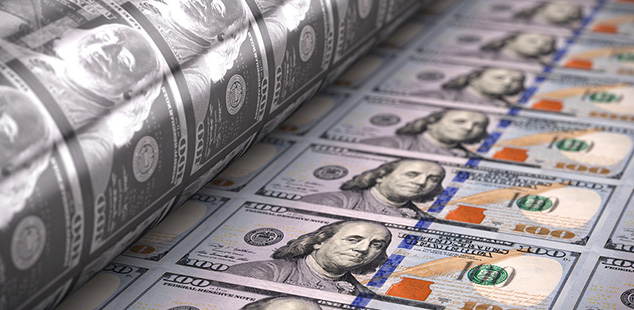
You have undoubtedly heard about the hyperinflation that occurred in post-war Germany in 1923. However, you may not be aware of the many times hyperinflation has crippled economies over the past century. The reality is that as more countries have exercised their privilege to print currency backed only by their “full faith and credit,” millions more individuals have been stuck with worthless paper in times of economic crisis.
How Often Has Hyperinflation Occurred?
Economists record another 55 times that faith in government-backed currencies has proven to be unwise due to hyperinflation. This number does not even include the hundreds of times countries have devalued their currency, significantly reducing the purchasing power, or value, of paper currency.
While many of these economic collapses have occurred in Latin American countries, examples of hyperinflation can be found in the economies of China, France and other nations. War is often a precursor of such periods of extreme inflation, but it is not the only cause. Fundamentally, economists such as Steve Hanke and Nicholas Krus have identified excessive printing of currency as the ultimate villain.
Hyperinflation Causes and Effects
These and other researchers who have studied those 56 instances of inflation have found circumstances where prices in nations doubled as often as every 12 hours. They have also determined that governments often created an environment for inflation through an identifiable process:
- Removal of any backing for a currency
- Willingness to print excess currency to spur growth or react to a crisis
- Failure to reign in such excess additions to the money supply
- Acceptance of inflation as a way to deal with the excess
- Failure to stop inflationary trends until it turns into hyperinflation
The key issue here is that governments are complicit in the factors that create the stage for hyperinflation, and then they are unable to control such circumstances when they get out of hand.
Purchasing Power and Gold
Many people fail to realize that the real test of a portfolio and the assets it contains is not the number of zeros that describe its size. Rather, the ultimate test of any asset’s value is its purchasing power. The reality is that when prices are doubling every 24 hours or every few days, paper currency loses purchasing power by the same ratio.
Throughout history, individuals have bought gold because of the proven ability of precious metals to protect purchasing power, or value.1 Studies of these periods of hyperinflation show that gold prices have risen roughly parallel to the increase in prices in affected countries.
In other words, if you are in a country with extreme inflation, much less hyperinflation, you may need twice as many dollars one day as you did the day before to buy a loaf of bread. However, if you were to buy that loaf one day for a tenth of an ounce of gold, you could still buy it the next for the same, or even less, amount, of gold.
Real Risks in Today’s Economy
Many economists, analysts and observers are watching with great concern as global economic conditions worsen. They are aghast at the number of government presses in countries throughout the world that run 24/7/365 printing currency backed only by the “full faith and credit” of countries who have increasingly little credit or faith. Many prudent, long-term investors who are aware of these concerns take action to protect their portfolio purchasing power by investing in gold and buying bullion.
Additional Sources:
1 – https://www.caseyresearch.com/articles/does-gold-keep-hyperinflation

